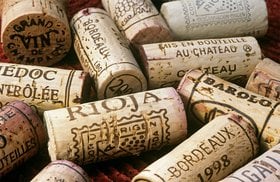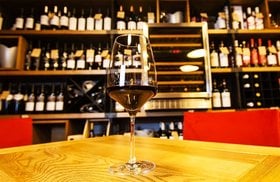Ultimate Guide To French Wine Regions (2025)
What are the famous French wine regions, and what are the best wines they produce?
Each of the renowned French wine making regions are known for different grape varieties, unique indigenous terroir (environmental conditions), and their own special wines.
But, how do you pick the best French wines to buy or collect?
By the end of this article, you’ll learn everything you need to know about these French wine regions and the best wines they produce. You’ll also discover the smartest way to buy French wines (and even make a profit by selling them!)
Further reading
All About French Wine
The home of Bordeaux and Burgundy, France, is one of the most renowned wine making regions in the world.
Accounting for 16% of the world’s total wine production, it was second only to Italy in 2019.
French wine makers have a rich heritage of winemaking that dates back centuries. While winemaking started even before the Roman conquest, it was the Romans who planted vines in all the renowned French wine regions that we know today.
Go on a wine tour around France, and you’ll find varied styles and qualities from over a hundred “appellations” (we’ll come to that soon.)
If you’ve noticed, French wine is labeled by wine region or appellation rather than the grape variety. You’ll also come across a great variety of terroirs and climates as well.
What are Terroir and the Appellation system?
During the Middle Ages, Benedictine monks in Burgundy noticed that different microclimates, soil conditions, vineyard elevations and winemaking techniques could create unique tasting wines.
And thus, France’s notion of terroir was born.
In essence, it is the natural environment in which a wine is produced that gives it a characteristic taste and flavor.
What is the Appellation d'origine contrôlée (AOC) system?
Wine quality in France continued to improve over the centuries from the time of the Romans. But, when the Phylloxera pest problem hit in the 1880s, whole vineyards had to be ripped up and replanted.
In 1855 emperor Napoleon III suggested that a classification system be developed to identify the best wines and vineyard in Bordeaux.
Later, in 1935, the French government established the Appellation d'origine contrôlée (AOC) system. This system geographically separated regions where particular types of grapes could be grown. This was meant to guarantee the quality and provenance of French wines.
Today, there are four categories of French wines:
Appellation d'origine contrôlée (AOC)
: The wines are of higher quality. These appellations are governed by strict winemaking regulations, including how much wine could be produced per hectare.
Appellation d'Origine Vin De Qualité Supérieure (AOVDQS):
This comes just after AOC in the wine hierarchy, with similar rules for the zone of production, grape variety, alcohol content, and growing methods.
Vin de pays:
This includes all “country wines” made from grape varieties and procedures other than those mandated by the AOC rules. The regulations regarding grape varieties and wine label practices are more lenient than those for AOC wines.
Vin de table:
Vin de table or table wines is the lowest level of French wine classification. There are no limits on grape varietals, appellation or vineyard yields, and they don’t need a vintage date.
In 2012, the AOC system was replaced by the Appellation d'Origin Protégée (AOP) system - the European Union classification system of wine quality equivalent to the AOC system.
Now, which grape varieties are grown in France?
Grape varieties in the French wine regions

A few dozen varieties of grapes are grown in the various appellations, including
- Merlot
- Ugni Blanc (used for Cognac)
- Grenache
- Syrah
- Chardonnay
- Cabernet sauvignon
- Cabernet Franc
- Sauvignon blanc
- Pinot Noir
- Petit Verdot
- Malbec
- Gamay
- Carignan
- Voignier
French Wine Categories
French wine falls under five broad categories - white, red, rose, sparkling, and fortified.
1. White wine
White wine is made from whites like Chardonnay or Viognier, red, or black grapes by extracting pigments away and using only the grape juice. This style of wine typically has bright, savory, and creamy flavors typical to a Chardonnay, Riesling, Sauvignon Blanc, and Moscato.
2. Red wine
Red wine like a Cabernet Sauvignon blend from Bordeaux or a Syrah blend from Côtes du Rhône is made the same way as white wine - the difference is that the grape skin, grape pip, and seeds are included in the fermentation process. Pinot Noir, Cabernet Sauvignon, Merlot, and Syrah are the most popular red wines.
3. Rose wine
Rose wine is made with red or black grape varieties with a shorter fermentation period around 24-36 hours. It’s also sometimes made by blending red and white wines together.
4. Sparkling wine
Sparkling wines contain high levels of carbon dioxide, making them fizzy when opened. They are fermented in a sealed environment without allowing the gas to escape.
A good sparkler would taste bright and fresh in your mouth, fruity, and sometimes sweet. It is synonymous with Champagne from the Champagne region in France, but there are many other fine sparklers like a Vouvray Effervescent.
Naturally, the next thing on your mind may be:
Why is French Wine So Diverse?
The diversity of French wines is due to the range of climates, geology, and topography across the country.
- Champagne in the north has a cool climate.
- Rhone Valley in the southeast is warm and dry.
- Bordeaux, in the southwest, has a Mediterranean, temperate climate.
- Burgundy and Alsace in the east have warm summers and cold winters.
- In the deep south, Provence and Languedoc-Roussillon are characterized by hot summers and mild winters.
Apart from climate differences, France’s wine regions have unique soil types and geographical features that create unique characteristics in their wines. For example, Beaujolais is filled with granite hills, while Chablis has chalky sloping terrain, and Medoc is predominantly gravel.
What Does the French Wine Map Look Like?
You’ll find over 27,000 wineries distributed all over France. From the sparkling wines of Champagne to the prestigious reds of Bordeaux and Burgundy, there are over 200 indigenous wine varieties in the country.
Let’s look at some of the famous French wine regions:
11 Major French Wine Regions and their Best Wines
There are 11 dominant French wine regions, each known for their unique terroir, grape varieties, and wines.
1. Bordeaux
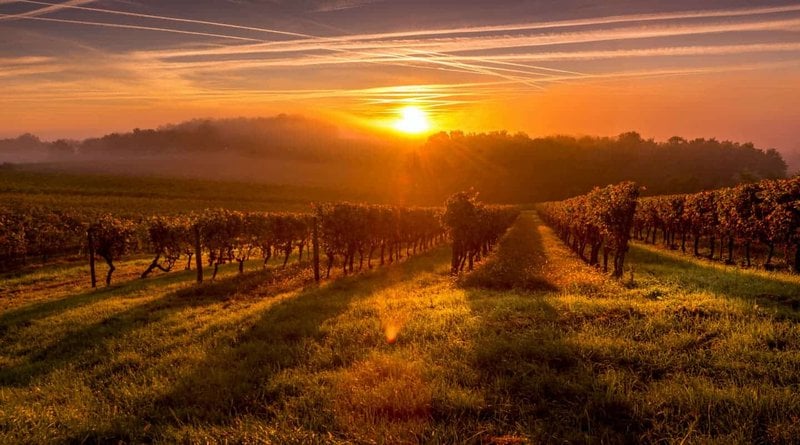
The prestigious Bordeaux in the southwest of France is home to over 60 growing appellations.
In 2019, 89% of the wine made in Bordeaux was red, mainly from Cabernet Sauvignon, Merlot, and Cabernet Franc with smaller amounts of Malbec and Petit Verdot grapes.
The Gironde Estuary divides the Bordeaux French wine region into two subregions. Everything west of the estuary is known as the "left bank", and everything on the east (like Saint Emilion) is called the "right bank."
The Left Bank is more favorable for Cabernet Sauvignon grapes because of the higher gravel content. In contrast, the clay-rich soil and harsher temperatures of the Right Bank are ideal for growing Merlot grapes.
The two sides of the estuary also have different appellation laws and classification systems.
Interestingly, Bordeaux wine is almost always a blend of Cabernet Sauvignon, Merlot, Cabernet Franc, Petit Verdot, and Malbec grape varieties.
The most popular Bordeaux wines are:
A. Left Bank Red Bordeaux
Here are the best Left Bank wines that you should look for:
- Lafite Rothschild
- Latour
- Margaux
- Haut Brion
- Mouton Rothschild
- Others like Chateau Palmer and Chateau Lafite Rothschild
B. Right Bank Red Bordeaux
Look for wines like
- Chateau Le Pin from Pomerol
- Chateau Petrus
- Chateau Lafleur Pomerol
- Chateau Angelus, Chateau Ausone and Chateau Pavie from the Saint Emilion grand cru and premier cru chateaux
C. White Bordeaux
The grape varieties of White Bordeaux are mainly Sauvignon Blanc and Semillon. Some great examples are
- Haut Brion Blanc
- Mission Haut Brion Blanc
- Yquem
- Pavillon Blanc 2nd £1,872
- Laville Haut Brion
D. Sauternes
Sauternes are distinctively flavored white Bordeaux sweet wines made from late ripening Sémillon, Sauvignon blanc grape, and Muscadelle. Some of the best ones are
- Suduiraut
- Chateau Y’Quem
- Chateau Coutet
- Chateau Doisy-Vedrines
- Château Climens Barsac
2. Burgundy
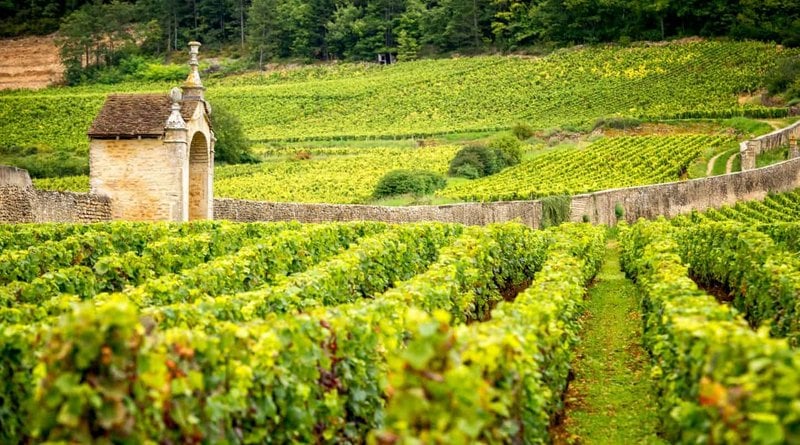
Burgundy (or as the French call Bourgogne), in eastern France, is a 100-mile area with a legacy of red wines (Pinot Noir), white Burgundy wines (Chardonnay), and Beaujolais (Gamay grape).
All the red Burgundy Grands Cru vineyards are located on the Côte de Nuits or the northern part of the limestone ridge in this French wine region. Only Corton Grand Cru is set on the Beune wine region of Côte de Beaune to the south of this ridge in Burgundy.
The smaller Jura wine region is also situated next to Burgundy.
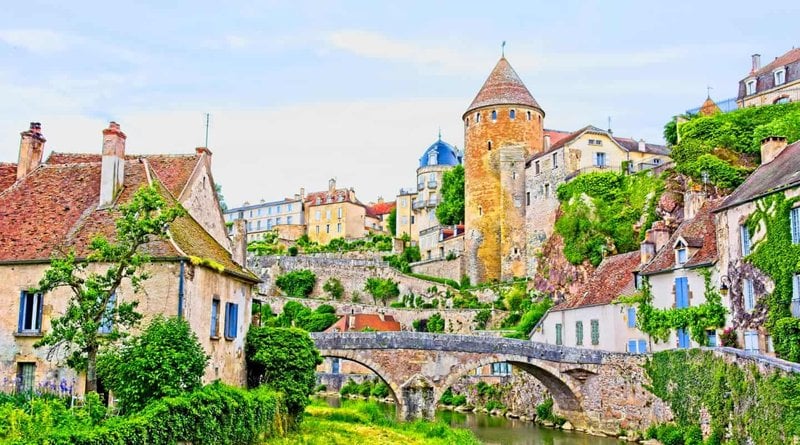
Here are some popular Burgundy wines:
A. Pinot Noir
The moderate climate and limestone soils in Burgundy work best for the high-maintenance Pinot Noir grapes, and let it express its full complexity. Terroir variations in the Burgundy grand crus are easily reflected in these grapes, which is why you’ll see so many nuanced variations of a Burgundy Pinot Noir.
Some of the best Pinot Noir wines from Burgundy are
- Châteaux des Quarts – Pouilly Fuissé
- Domaine Henri Delagrange Les Bertins Premier Cru
- Romanée-Saint-Vivant
- DRC Richebourg Vosne-Romanée
- Musigny Georges Roumier
B. Chardonnay
With complex flavors and crisp acidity, white Burgundy wine is a Chardonnay lover's dream. The best whites in Burgundy come from Cote d’ Or (meaning “golden slope”) in the south of Dijon (famous for Dijon mustard!) This wine producing region is also famous for its Chablis - a type of light-bodied Chardonnay that ages in stainless steel instead of oak.
The best Burgundy Chardonnay to look for:
- Albert Bichot Domaine du Pavillon
- Chateau de Fuissé Les Brules
- Jean-Marc Brocard Butteaux Premier Cru
- Joseph Drouhin Puligny-Montrachet
- Fontaine-Gagnard Le montrachet
3. Alsace
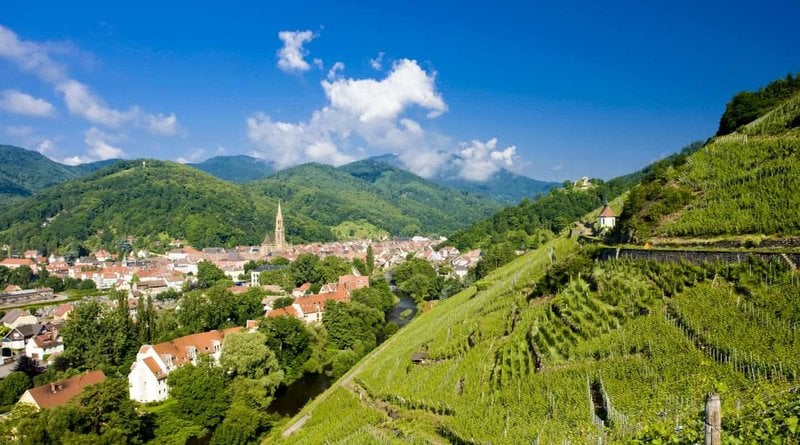
Grand Cru vineyards in Alsace are characterized by unique micro-climates, exposures, and geological blends. Alsace wine names go after the grape varietal instead of the place names of origin.
They are produced under three key appellations - Alsace and Alsace Grand Cru for still white wines, and Crémant d Alsace for sparkling wines.
The Riesling, Pinot Gris and Gewürztraminer wines from the Alsace wine region happen to be more affordable than any other French wine label.
A. Riesling
The traditional Alsace Riesling is a dry, white wine with mineral nuances. Some of the best ones are:
- Trimbach Riesling Clos St Hune
- Domaine Weinbach Riesling Schlossberg
- Domaines Schlumberger Kessler Grand Cru
- Schoenheitz Riesling Alsace Herrenreben Vendanges Tardives
- Domain Valentin Zusslin Riesling Alsace Grand Cru Pfingstberg
B. Pinot Gris
The volcanic and limestone soils in Alsace provide the perfect canvas for growing Pinot Gris. These wines have a fuller body with a rich flavor profile. For example:
- Josmeyer Fromenteau
- Emile Beyer Tradition
- Domaine Zind-Humbrecht Clos Windsbuhl
- Marc Kreydenweiss Moenchberg
- Wolfberger Alsace Vieilles Vignes
4. Champagne
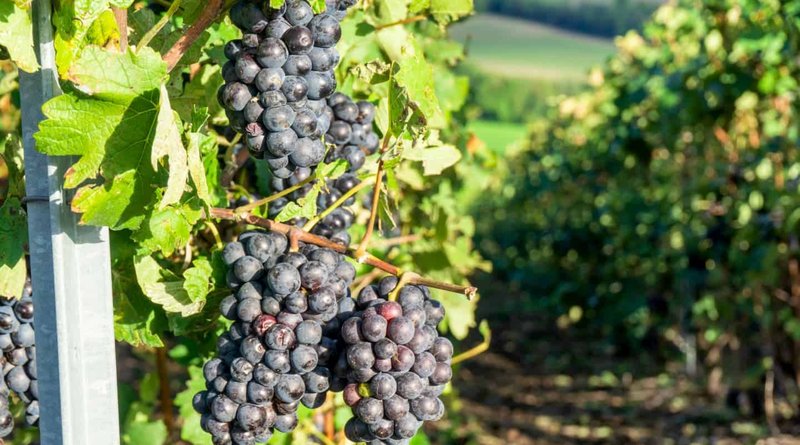
To the east of Paris lies Champagne - the northernmost wine region in France. It is divided into three areas – the Montagne de Reims, the Côte des Blancs, and Vallée de la Marne.
Wineries here use a labor-intensive, traditional technique called méthode Champenoise, where wine is fermented twice in the bottle to make sparkling wines.
In this wine region, wines are blended to produce vintage champagnes (blend of wines from the same harvest) and non-vintage champagnes (blend of wines from different years.)
A. Sparkling Blanc de Blancs
These “white from white” wines use only light-skinned grapes, typically 100% Chardonnay. They are lighter and dryer than the blanc de noirs. Some great examples are
- Pierre Moncuit Blanc de Blancs NV
- Champagne Serge Gallois Blanc de Blancs
- Henriot Blanc de Blancs NV
- Ruinart Blanc de Blancs NV
- Delamotte NV Blanc de Blancs
B. Sparkling Blanc de Noirs
Pinot Noir and Pinot Meunier black grapes are used to make these “white from black” wines. They are more full-bodied with more fruity fleshiness than the Blancs.
- Krug Clos d'Ambonnay Blanc de Noirs Brut
- Ulysse Collin Les Maillons Blanc de Noirs Extra Brut
- Charles Collin Blanc de Noirs Brut
- Maison Mumm RSRV Blanc de Noirs Brut Grand Cru
- Champagne De Venoge Princes Blanc de Noirs
5. Rhone Valley

The Rhone river divides the Rhone valley or Côtes de Rhône into Northern Rhone and Southern Rhone Valley. The very recognizable names Châteaunefuf-du-Pape and Hermitage are appellations in the Rhone Valley region in Lyon.
A. Syrah
Northern Rhone is most synonymous with the Syrah grapes that find their smokiest, meatiest expression on the hillsides here. Try the Syrah from St. Joseph, Cornas, Côte-Rôtie, Hermitage, or the Vin de Pays Collines Rhodaniennes such as
- Paul Jaboulet Aine Hermitage La Chapelle
- E. Guigal Cote Rotie La Mouline
- Jean-Louis Chave Hermitage
- Guigal La Landonne Cote Rotie
- M. Chapoutier Ermitage Le Pavillon
B. Grenache Syrah Mourvèdre (GSM) blends
Southern Rhone is nearly ten times bigger than the Northern Rhone Valley and is all about GSM blends. Get hold of these wines when you visit the Rhone Valley:
- A basic red Côtes du Rhône bottle
- Château de Saint-Cosme 2017 Côte Rôtie
- Le Cigare Volant from Châteauneuf-du-Pape
- Château Trillol Grenache Carignan Syrah
- Ortas La Domeliére Rasteau
C. Marsanne Blend (white)
The white wines of Hermitage, Crozes-Hermitage, St-Joseph, and St-Péray are made predominantly from Marsanne in Northern Rhone Valley. Some of the best Marsanne blends are
- M. Chapoutier Ermitage 'L'Ermite Blanc'
- M. Chapoutier Ermitage de l'Oree Blanc
- M. Chapoutier Ermitage Le Meal Blanc
- M. Chapoutier Saint-Joseph Blanc 'Les Granits'
E. Guigal Saint-Joseph 'Cuvee Lieu-Dit Saint-Joseph' Blanc
6. Languedoc and Roussillon
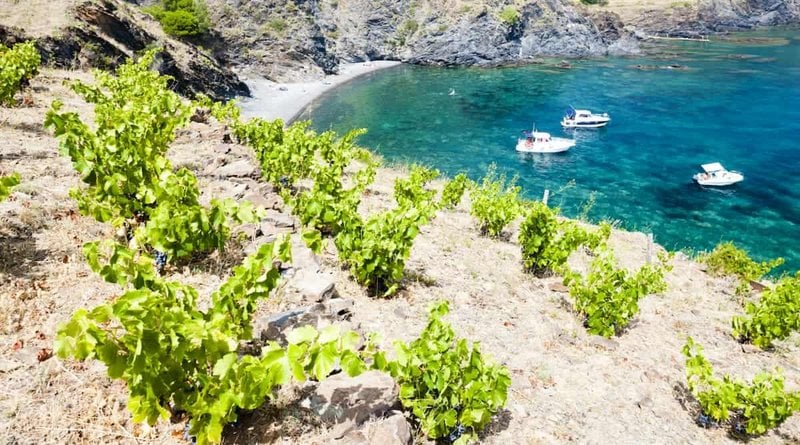
Languedoc and Roussillon are two winemaking regions on the Mediterranean coast. They’re known for their red and rosé wines, which are a blend of Syrah, Grenache, Carignan, Cinsault, and Mourvèdre, among others.
A. Grenache blends
Fortified sweet wines made from Grenache blends in Roussillon are quite popular.
- Domaine De La Pertuisane Le Nain Violet Grenache
- Château Des Jaume Cru Maury Sec
- Domaine Lafage Nicolas Grenache Noir
- Domaine Des Prés-Lasses Le Castel Viel Faugères
- Collioure Coume del Mas Schistes - Collioure
B. Sparkling Limoux
The sparkling wines you should watch out for are
- Blanquette de Limoux made from Mauzac grapes
- Crémant de Limoux from Chenin Blanc and Chardonnay grapes
- Domaine de Baron'Arques Limoux
- Domaine de Baron'Arques Limoux Blanc
- Sieur d'Arques Limoux Toques et Clochers Malras
7. Loire Valley

Nestled in the northwest part of France, Loire Valley produces white wines like Sancerre, Vouvray, Pouilly-Fume, and Muscadet made from Melon de Bourgogne grapes. Loire Valley wines come in a variety of styles, from dry to sweet, lighter whites and sparkling.
A. Sauvignon Blanc
Perhaps the most renowned of the Loire Valley appellations is the Sancerre. It is known for its limestone-rich soils and Sauvignon Blanc vineyards in Loire Valley. Look out for these fabulous wine in the Loire:
- The full-bodied Loire Pouilly-Fume
- Alphonse Mellot 2016 Edmond (Sancerre)
- Chateau de Tracy 2015 Haute Densité
- Pascal Jolivet Sancerre La Chêne Marchand
- Domaine Delaporte Sancerre “Silex”
B. Chenin Blanc
Chenin Blanc, also called Pineau de la Loire, is another white varietal that is distinctive to the Loire Valley. The famous Vouvray wines are made from these versatile Chenin Blanc grapes in Loire Valley.
- Chateau De Fesles Bonnezeaux
- Touraine Azay-le-Rideau
- Saumur Blanc Brézé
- Coteau du Layon
- Francois Chidaine Vouvray Les Argiles Sec
C. Cabernet Franc
Cabernet Franc (also called Breton in the Loire) ripens earlier than Cabernet Sauvignon, making it most suited for the cool climate of Loire Valley. When in the Loire Valley, you should get hold of a
- Cabernet Franc Chinon
- Bourgueil
- Loire Saumur-Champigny
- Chateau de Villeneuve, Le Grand Clos
- Domaine de la Butte, Mi-Pente, Bourgueil
8. Provence
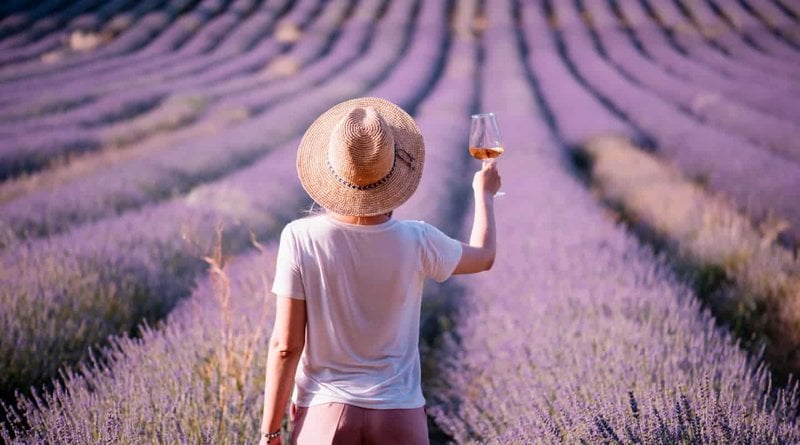
The beautiful Provence, famous for its rose wines, lies tucked away on the south-eastern coast of the country. Its rich vineyard heritage boasts the likes of Chateau Pradeaux and Chateau de Roquefort.
A. Rosé
The roses of Provence are delightfully fruity with crisp acidity. They are made from a blend of red grapes like Cabernet Sauvignon, Syrah, Cinsault, and Mourvèdre. In Provence, get hold of the fine
- Chateau Vignelaure 2019 Rosé
- Chateau des Bertrands 2019 Rosé
- Chateau Vannières La Patience Rosé (Bandol)
- Chateau Minuty Prestige Rosé (Côtes de Provence)
- Chateau D’esclans Cotes de Provence
B. Mourvèdre
With Spanish origins, this grape needs a hot, dry climate for its late ripening cycles - which makes Provence a perfect home. On a trip to Provence, get hold of a
- Cuvee La Tourtine from Domaine Tempier
- Domaine Bunan Mourvedre
- Domaine Tempier Bandol Rouge
- Chateau de Pibarnon Bandol
9. South West

The South West (“Sud-Ouest”) is a lesser-known wine region in France where scenic vineyards rub shoulders with thick forests.
A. Malbec
These wines would make fine samples of South West Malbecs
- Crocus La Roche Mère
- Chateau Lamagdelaine Noire
- Chateau Lagrezette, Cahors
- Georges Vigouroux Chateau de Haute-Serre Malbec
- Jean-Luc Baldes Clos Triguedina Probus
B. Colombard, Ugni Blanc, and Gros Manseng blends
The grapes of Colombard and Ugni Blanc make great whites with juicy, crisp notes of lemongrass and apple.
- Gascogne Blanc
- Domaine de Ménard 2019 Colombard & Sauvignon Blanc Colombard-Sauvignon Blanc
- Plaimont Colombelle Colombard-Sauvignon Colombard
- Domaine Denis Tastet Trinquet
- Tastet 'Tonelle' Colombard
10. Beaujolais
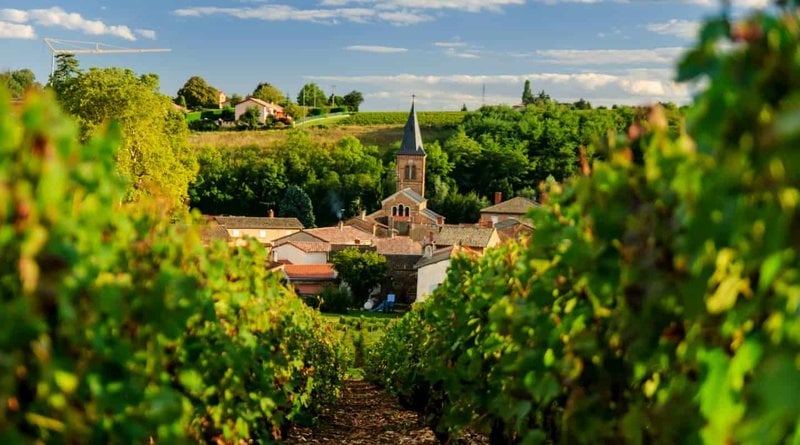
The Beaujolais area lies just south of Burgundy and is most famous for its Gamay vineyards. The fertile soil enriched by the Nizerand River holds the key to the Beaujolais flavor.
A. Gamay
The light red Gamay Noir wines leave you with fruity aromas and flavors of the Beaujolais forests. Beaujolais Crus like these are worth looking for:
- Domaine Anita Coeur de Vigneronne, Moulin-à-Vent
- Beaujolais Nouveau
- Domaine Anita Prémium Les Brureaux, Chénas
- Château du Châtelard 2016 Renaissance, Fleurie
- Domaine de la Pirolette 2017 La Poulette, Saint-Amour
11. Corsica
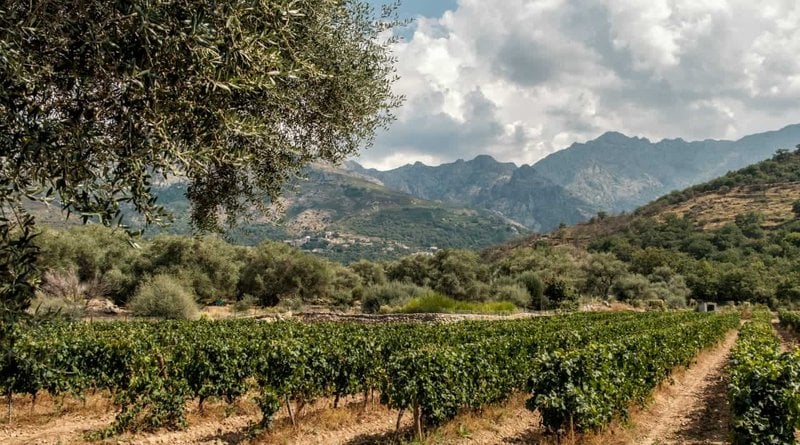
Although it's an island under the French rule, the proximity to Tuscany is apparent in Corsica’s wines. You’ll find vineyards of Pinot Noir, Tempranillo, and Barbarossa growing alongside each other. Seek out fine wines like Patrimonio, Ajaccio, Vin de Corse Sartène, and Vin de Corse.
A. Nielluccio
This dark-skinned red grape variety is widely planted in Corsica and is used to make the AOC red Patrimonio. Neilluccio is closely related to Tuscany’s Sangiovese. The best ones are
- Domaine De Tanella - Clos Marc Aurele
- Domaine Maestracci Corse Calvi E Prove Rose
- Domaine Vico Vin de Corse Clos Venturi Rouge
- Domaine Comte Abbatucci Ajaccio Faustine Vieilles Vignes Rose
- Domaine Vetriccie Rose, IGP Ile de Beaute
B. Vermentino
The underrated Vermentino wines are made from this white variety (also called Malvoisie.) Although as deliciously complex as Sauvignon Blancs, these wines are lesser-known and hence are priced lower. For example,
- Domaine De Tanella - Cuvee Alexandra
- Maestracci Villa Maestracci
- Clos Culombu Ribbe Rosse 2015 Vermentino
- Maestracci E Prove 2015
- Locations Corse Vermentino
The next big question is: how do you get hold of these fine French wines for your collection?
The easiest way to buy authentic wines from the best wine areas in France is through a wine investment company like Vinovest.
Here’s how that works...
Buying Wine Bottles from French Wine Regions through Vinovest (for Drinking and Investing)
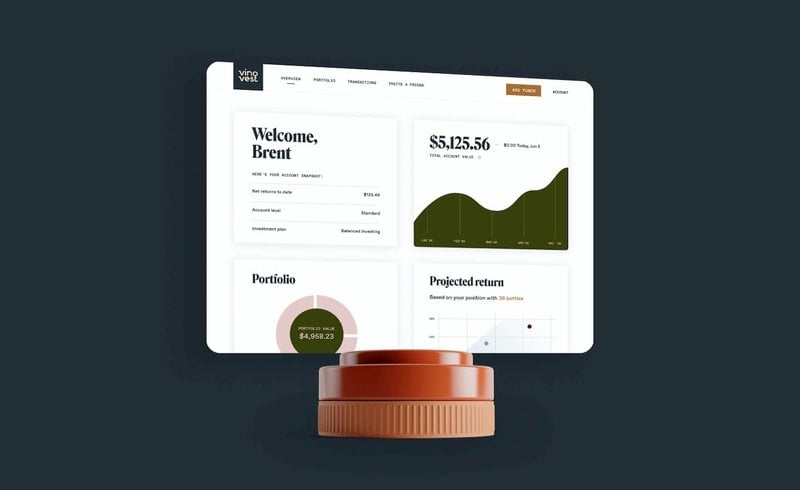
Vinovestlets you buy fine wines from anywhere in the world, including the French wine regions.
You can have your bottles stored safely, and have them delivered to you for drinking whenever you want them.
The best part is: you can even sell them later for a profit!
How do you buy or invest in French wines through Vinovest?
All you need to do is this:
- Sign up
- Answer a questionnaire that’ll help Vinovest assess your investment preferences and risk appetite.
- Add funds to your account.
- Track your portfolio and watch it grow over time.
What are the benefits of buying French wines or investing in them via Vinovest?
Vinovest will choose, authenticate, buy, store, deliver and even sell your French wine bottles for you.
Here are some of the benefits:
Easy buying
You can easily buy wines from France or any other wine region using Vinovest’s intelligent online platform.
Provenance and authenticity
You won’t need to worry about counterfeit wines or scams. Vinovest will authenticate your wines and trace their provenance before you buy them.
Curated portfolio, thanks to an expert Sommelier team
Apart from buying wines for drinking, you can build a curated investment portfolio of high-performing wines. These will be handpicked by an Advanced Sommelier and three Master Sommeliers, with the help of an Artificial Intelligence-based platform.
Experience French wine through exclusive events
You can experience French wines through a visit to an upcoming vineyard or a private sale in the wine region. Join wine tastings with the Master Sommeliers, who host renowned winemakers and vineyards.
Perfect storage
Vinovest stores your wines in bonded warehouses under optimal conditions of light, humidity, temperature, and vibration.
Easy delivery of wines
In case you want to drink your wines, you can have them delivered to your home cellar easily.
Easy selling of wines
If you wish to make a profit, you can easily sell your wine collection. Vinovest will deliver the wines to the counterparty buyer.
Ownership
You get full ownership of the wines you buy.
Couldn’t ask for more, right?
To Conclude
The prestigious French wine regions and the wines they produce are so diverse that choosing the right ones could be overwhelming.
Thankfully, Vinovest offers you the easiest way to buy the right French wines - for drinking on a special occasion, and for investing in the long term
Why not sign up now to create your wine portfolio right away?


